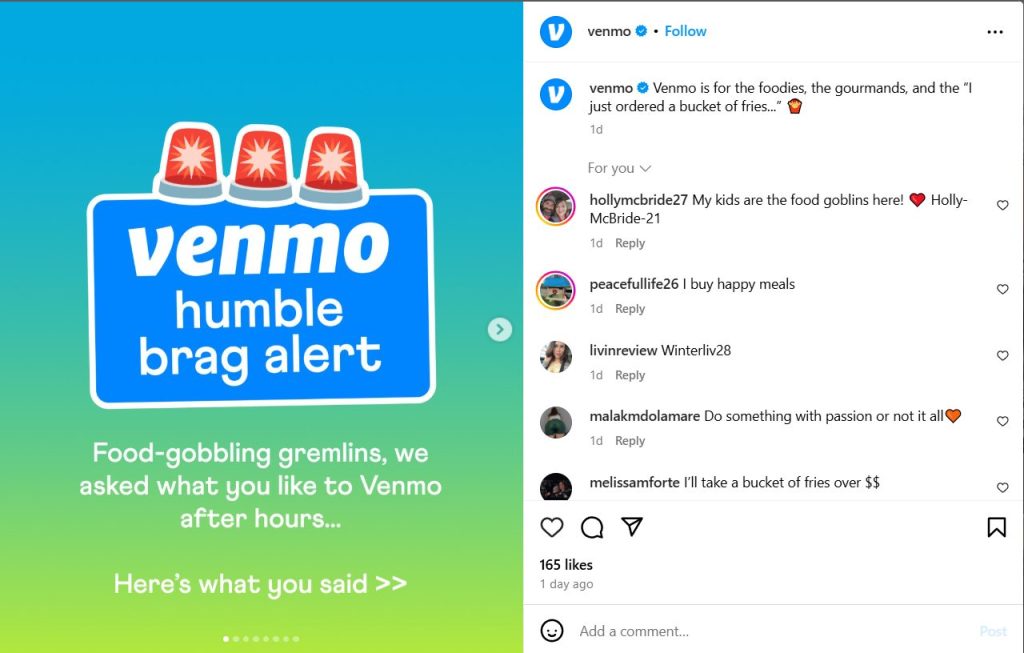From abbreviations and popular slang to GIFs and emojis, brands are finding new ways to communicate with their audiences. But when it comes to the finance industry, a space built on trust and compliance, should emojis be part of a brand’s vocabulary? As a leading financial content marketing agency, we’re looking at whether your finance company should use emojis.
The Rise of Emojis
Emojis first emerged in Japan in the late 1990s, created by Shigetaka Kurita as a set of 176 pictograms used on mobile phones. Since then, emojis have exploded into a universal language, bridging cultural and linguistic gaps with small but powerful symbols. According to various social media monitoring tools and Unicode Consortium data:
- Over 10 billion emojis are sent daily across messaging platforms and social media.
- Emojis are now a standard part of communication for more than 90% of global internet users.
Most Popular Platforms for Emoji Usage
Emojis dominate across digital platforms, with the heaviest usage on:
- WhatsApp and iMessage for private conversations.
- Twitter, Instagram, and TikTok for public expression.
- LinkedIn, surprisingly, has also seen increased emoji usage, though in a more reserved and strategic way.
Top Emojis Worldwide
According to Unicode’s 2023 rankings, the most popular emojis include:
#1 😂 Face with Tears of Joy
#2 ❤️ Red Heart
#3 🤣 Rolling on the Floor Laughing
#4 😍 Smiling Face with Heart-Eyes
#5 🙏 Folded Hands
Money-related emojis like 💸 (money with wings) and 💰 (money bag) also appear frequently in contexts related to business, investing, and online hustle culture. But let’s get to that in a minute.
Should Your Finance Company Use Emojis?
The finance industry is traditionally seen as conservative and professional. Trust, compliance, and clarity are paramount. So, introducing playful icons might seem out of place. But Gen Z, millennials and Gen X are accustomed to using emojis in everyday conversations. So, finance brands, especially those aiming at younger demographics, are rethinking how they connect with their audiences.
Tone of Voice and Strategic Brand Identity
Before adding emojis to your next social post or email subject line, your brand should answer a critical question: “Who are we, and how do we communicate with our audience?” This is the foundation of a tone of voice strategy. Emojis are an extension of tone, just like slang, formal grammar, or regional expressions.
Ask Yourself:
- Is our brand conversational or formal?
- Do we target Millennials and Gen Z or retirees and older decision makers?
- Is our goal to educate, entertain, or build authority?
- How do emojis enhance or dilute our credibility?
For example, a challenger bank appealing to young investors might benefit from using emojis. A private wealth firm dealing with HNW clients likely won’t.
Emojis and Financial Compliance
In finance, compliance isn’t optional, especially when communicating about products, risks, or performance. So can emojis be non-compliant?
Potential Issues with Emoji Use in Finance:
- Misinterpretation: Emojis are subjective. A money bag 💰 might feel celebratory to one user and misleading to another.
- Regulatory Ambiguity: Regulatory bodies like the SEC, FCA, and FINRA haven’t clearly defined how emojis factor into financial disclosures. But that doesn’t mean they’re risk-free.
- Marketing Oversight: Emojis used in promotional material may fall under marketing compliance rules and could mislead if they imply guaranteed returns or low risk.
A particularly risky area is using emojis in investment promotions. For example:
“💸 Invest today and watch your money grow! 🌱🚀”
That sounds like a promise. Something regulators frown upon unless accompanied by detailed disclaimers.
Where and How to Use Emojis
Let’s take a deep dive into how we should use emojis across our communication channels in the finance space.
#1 Email Marketing
In email marketing, emojis are often touted as a shortcut to higher open rates and click-throughs. But for finance brands, emoji use in email isn’t just a creative choice. It’s a strategic decision with implications for brand perception, tone, compliance, and also deliverability.
Here’s a deeper look at how and when emojis might fit into your finance email strategy and where they can backfire.
Subject Lines: Attention-Grabbing — But Not Always Safe
- Strategic Benefit: Emojis can increase open rates by visually breaking up inbox clutter and conveying tone or urgency. Financial newsletters with emojis in the subject line often report 5–15% higher open rates . But this varies significantly by audience segment.
- Tone Caution: The same emoji can evoke different emotions across generations. A fire emoji (🔥) might read as exciting to a 28-year-old crypto trader, but as flippant or unprofessional to a 55-year-old portfolio manager.
- Branding Risk: Emojis in subject lines risk undermining perceived authority especially in regulated environments. Overuse may make your messages appear gimmicky or untrustworthy.
Deliverability & Spam Triggers: The Hidden Risk
Using emojis in subject lines or preheaders can negatively impact deliverability if not handled carefully. Spam filters may flag messages with excessive or inappropriate emoji use, especially when combined with:
- All-caps words (“ACT NOW!” 🔥💰🚀)
- Overuse of punctuation (!!!), or
- “Get-rich” language tied to money symbols
- The rocket is a tell-tale AI sign too …
Some key technical and operational issues to watch for:
Encoding Compatibility
- Emojis use UTF-8 encoding, which isn’t universally supported in older email clients or infrastructure. If improperly rendered, recipients may see a ☐ (tofu box) or � character, breaking subject line flow or looking like a rendering error.
- Ensure your ESP (Email Service Provider) supports full UTF-8 encoding across all parts of the message — subject, preheader, and body.
Spam Score Impact
- Tools like SpamAssassin assign scores to messages based on spammy characteristics and emojis can increase that score if paired with promotional or “too good to be true” language.
- Finance brands are especially vulnerable, as money-related emojis like 💸 or 💰 may be read as get-rich-quick signals, triggering quarantine or blacklisting by ISPs.
Inbox Placement Issues
- Gmail and Outlook may route emoji-heavy emails to “Promotions” or “Clutter” folders, especially if the email lacks personalization or engagement history.
- Emails with emojis in the subject line are less likely to land in the Primary tab, reducing visibility even if not outright flagged.
In-Body Emoji Use
Using emojis inside the email body can serve as visual signposts to structure complex financial content or draw attention to calls to action.
Best Practices:
- Use emojis to complement, but never replace, financial terminology.
- Anchor emojis near headlines, section breaks, or bullet lists to enhance scanability.
- Choose neutral or brand-consistent icons (✅, 📊, 🧾) over emotional or casual ones (🔥, 💃, 🤑).
Example – Responsible Use in Email Body:
This Month’s Highlights:
📊 Investment Portfolio Snapshot
🧾 New Tax-Efficient Product Launch
🔒 Enhanced App Security Features
What to Avoid:
- Money bag 💰, rocket 🚀, or cash emoji 💸 in relation to products, investments, or performance.
- Emojis used in place of product names, legal language, or disclaimers.
Tailor Emoji Use by Audience Type
Finance brands often serve multiple segments, from student savers to high-net-worth investors. Emoji appropriateness should be audience-specific and tested accordingly.
Recommendations:
- Millennials & Gen Z: May respond well to occasional, well-placed emojis if aligned with a casual brand voice.
- Professionals or B2B Audiences: Expect more restraint, use only for visual organisation, if at all.
- Older Demographics: Emoji usage should be conservative or eliminated unless clearly reinforcing message clarity.
Use A/B testing at the segment level, not just across the general list, to understand performance and perception.
Don’t Emoji Past the Compliance Line
In financial services, marketing compliance extends to every character, emojis included. Emojis can unintentionally convey:
- Implied performance
- Guaranteed outcomes
- Product recommendations
All of which may violate financial promotions regulations from bodies like:
- FINRA (U.S.)
- FCA (U.K.)
- ASIC (Australia)
Include emoji use in your pre-approval workflow. Marketing, compliance, and legal teams should agree on an emoji whitelist and usage rules.
#2 Social Media
Social media offers the best landscape for emoji usage. But for finance brands, this opportunity also comes with nuance. Every emoji you use reflects your tone, intent, and brand promise and can be misread without proper framing.
Here’s how to approach emoji usage on social, platform by platform, with strategic intent:
Twitter/X: Fast-Paced, Risk-Prone
- Use cases: Real-time commentary, market updates, alerts, engagement posts.
- Emoji strategy: Emojis can increase scannability, emphasize emotion or urgency, and improve visibility in crowded feeds.
- Risks: Due to character limits, financial nuance can be lost. An emoji may unintentionally imply performance or certainty.
Advanced Tip: Use emojis as semantic markers, not mood enhancers. For example, pair the 📉 emoji with carefully worded disclaimers or neutral tone:
“Markets dipped today 📉 Here’s what long-term investors need to know. [link]”
Avoid hyped-up posts like:
“ETH is going to the moon 🚀🚀🚀🔥”
This may appear as investment advice or promotional content, triggering regulatory red flags. It’s also super spammy.
LinkedIn: Professional
- Use cases: Thought leadership, hiring announcements, product updates.
- Emoji strategy: Limited emoji use (1–2 per post) can add structure or soften tone. Think checkmarks ✅, clocks ⏱, or lightbulbs 💡 for ideas.
Advanced Tip: Use emojis to visually organise information. Instead of a dense paragraph, break posts into short, emoji-led bullets:
✅ New savings product
⏱ Early withdrawal flexibility
🔒 FCA regulated and protected
This increases scanability and enhances perception of transparency, while remaining compliant and professional.
Instagram: Visual-First
- Use cases: Customer lifestyle content, brand storytelling, reels, and promotions.
- Emoji strategy: Emojis here should match visual tone and brand palette. E.g., playful for fintechs, minimalist for wealth managers.
Advanced Tip: Align emoji tone with visual creative and demographic targeting. If you’re targeting Gen Z investors, emojis like 💸 or 💼 can work but ensure they’re paired with responsible messaging.
For example:
“Setting up your first investment account? Start here 🧠💼📈”
Avoid:
“Double your money fast 💰💰💰”
TikTok: Entertaining, But Never Rude
- Use cases: Entertainment, FAQs, financial explainers, trends.
- Emoji strategy: Emojis here are cultural signals and the mood is a little lighter. But finance brands should still be wary of money/wealth emojis.
Advanced Tip: Familiarise yourself with the meaning behind emojis before you use them. Examples include the peach for butt, the eggplant for male genitalia, and the smirking face or tongue for a suggestive or mischievous intent.
#3 Blog Posts
In long-form content like blog posts, whitepapers, and thought leadership articles, emojis are less common, and for good reason. Blogs are a cornerstone of search-optimised, authority-building content, especially in the finance space. Introducing emojis raises important questions about tone, clarity, accessibility, SEO, and compliance. Here’s a deeper look into the strategic considerations.
Blogs Are Built for Credibility and Emojis Can Undermine It
Blogs in finance serve a very specific purpose:
- Establish thought leadership and industry authority
- Educate readers on complex topics (taxation, forex trading, investment, policy)
- Build SEO traction via long-tail keywords and structured data
Unlike social media or email, blog content is expected to be substantive, evergreen, and authoritative. Emojis, if used thoughtlessly, can make a post feel lightweight, unserious, or even gimmicky.(Apart from this one which needed some emojis in it to prove the points!)
When (and How) Emojis Can Work in Blog Content
Despite these risks, emojis can enhance a finance blog post, if they serve a clear communicative or visual function.
Strategic Use Cases:
- Section markers: A subtle emoji can guide scanning or break up dense headers.
- List enhancements: Emojis can structure key takeaways or summaries.
- Tone modulation: In more casual blogs (e.g., budgeting tips for Gen Z), emojis can align with reader expectations and soften overly formal copy.
SEO Risks
- Emojis in meta descriptions or headings (H1/H2) can confuse search engines or disrupt keyword indexing. Basically, don’t do it.
- Some search engines strip emoji characters entirely meaning they add no ranking value and may disrupt CTR testing consistency.
Advanced Tip: Never place emojis in structured data fields (e.g., schema markup), alt tags, or canonical metadata unless explicitly tested for rendering and SEO impact.
Accessibility Concerns
- Screen readers interpret emojis differently across devices and sometimes literally. A 📈 emoji may be read aloud as “chart increasing,” which, in context, can be confusing or redundant. Always test with screen reader tools (e.g., NVDA or VoiceOver) before publishing. Read more about social media accessibility.
Compliance Within Editorial Content
Even in blogs which may be classified as educational or editorial, financial firms must consider regulatory interpretations of emoji use.
For example:
- A rocket emoji (🚀) next to a discussion of a fund’s past performance could imply upward potential — potentially violating the fair and balanced communication rules.
- A money emoji (💰) next to a high-yield savings account description could be read as implying returns, which may require a disclaimer.
Best Practice: Maintain the same editorial compliance workflow for emojis as for hyperlinks, performance references, or risk language. If an emoji modifies the tone of the message, it should be treated as content subject to regulatory review. At Contentworks Agency we pass all finalised content through a company’s compliance department prior to publishing.
Emojis in Thought Leadership vs. Top-of-Funnel
Emojis may be more acceptable (and even helpful) in lightweight content such as:
- How-to guides
- Financial tips
- Budgeting checklists
- Infographics or “explainer” blogs
- Listicles
But in thought leadership, policy analysis, or deep-dive investment strategy content, emojis are generally out of place. Segment your content pipeline by tone level and define a “visual language scale.” For example:
- Level 1: Emojis allowed in headers and lists (company news and entertainment content)
- Level 2: Emojis allowed only in summaries (how to guides and checklists)
- Level 3: No emojis allowed (policy updates and investment/trading)
Used responsibly, emojis can be lightweight UX tools that enhance structure and tone in the right types of blog content. Used carelessly, they can undermine authority, alienate audiences, or even introduce compliance risk.
Examples of Finance Brands Using Emojis Effectively
Monzo (UK Digital Bank)
Monzo frequently uses emojis in tweets, app notifications, and even customer service messages. Their tone is informal, friendly, and emoji use aligns with their audience of tech-savvy Millennials. Here Monzo uses the trophy emoji to show off the latest awards.

Venmo
Venmo’s transaction feed thrives on emoji use. Users describe payments with fries, beer mugs, and rent emojis, creating a sense of community and relatability. And food gobbling gremlins is content gold!

N26
N26 is a Berlin-based mobile bank that targets digitally native users with a sleek, lifestyle-focused brand. On social media, N26 uses emojis to create a friendly, conversational tone, making financial topics more approachable, boosting engagement, and visually guiding users through content. Emojis like 🎉, and ⚡️ reinforce key messages and align with the bank’s youthful, mobile-native identity.

So, Should Your Finance Brand Use Emojis?
The answer isn’t a simple yes or no, it’s about brand identity and strategic alignment. In the finance world, every word (and symbol) matters. Emojis are powerful communication tools. But like any tool, they must be used intentionally and appropriately.
Instead of asking “Can we use emojis?”, ask:
- “Do emojis support our strategy?”
- “Will they resonate with our audience?”
- “Can we ensure compliance while still being creative?”
At Contentworks Agency we have a deep understanding of the financial marketing space. Book a free Zoom with our team to get started with your digital marketing strate
